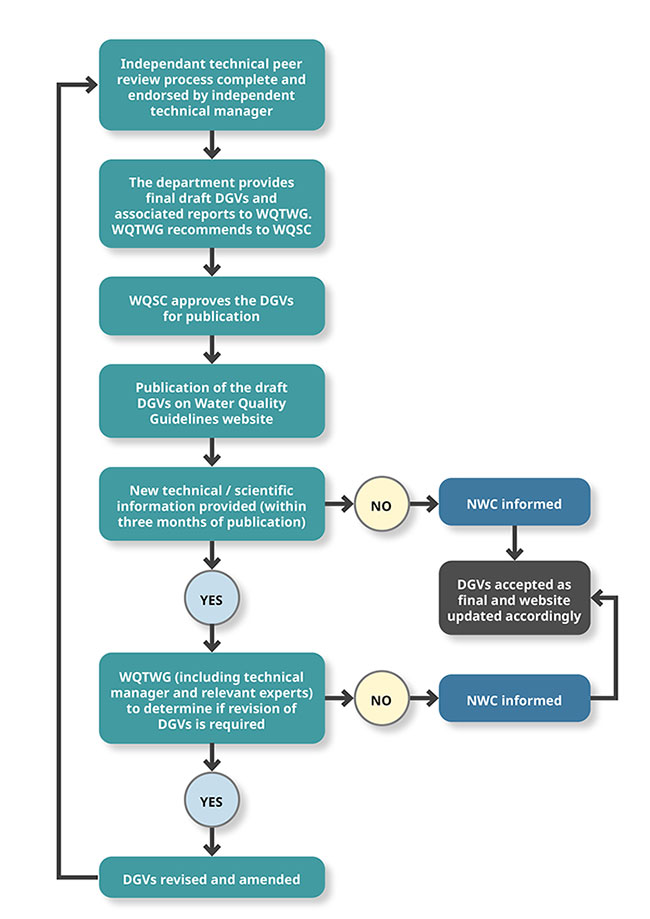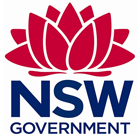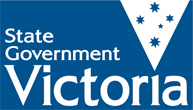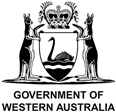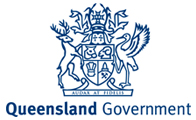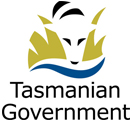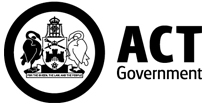New or revised toxicant DGVs will be published as a draft for public comment for a period of at least 3 months as a part of our approval process. Until the approval process has been successfully completed, the draft DGVs should not be used or referred to as an Australian and New Zealand Guidelines for Fresh and Marine Water Quality DGVs.
Draft DGVs will continue to become available on this website.
If you want to know when the revised guidance has been published, please subscribe for updates.
Submit a response
Provide feedback on a draft DGVs during the 3-month public comment period by sending us a completed Submission on the draft toxicant DGVs.
Table 1. Toxicant draft DGVs for water and sediment — drafts for public comment
| Toxicant | Files | Public comment period closing date |
|---|
| Atrazine in marine water | - Atrazine in marine water. Draft toxicant default guideline values for protecting aquatic ecosystems, technical brief
- Atrazine in marine water. Draft toxicant default guideline values for protecting aquatic ecosystems, data table
- Atrazine in marine water. Draft toxicant default guideline values for protecting aquatic ecosystems, quality assessment worksheet
| 28 February 2026 |
| Fipronil in marine water | - Fipronil in marine water. Draft toxicant default guideline values for protecting aquatic ecosystems, technical brief
- Fipronil in marine water. Draft toxicant default guideline values for protecting aquatic ecosystems, data table
- Fipronil in marine water. Draft toxicant default guideline values for protecting aquatic ecosystems, quality assessment worksheet
| 28 February 2026 |
| Chlorine in marine water | - Chlorine in marine water. Draft toxicant default guideline values for protecting aquatic ecosystems, technical brief
- Chlorine in marine water. Draft toxicant default guideline values for protecting aquatic ecosystems, data table
- Chlorine in marine water. Draft toxicant default guideline values for protecting aquatic ecosystems, quality assessment worksheet
| 28 May 2025 |
| Manganese in marine water | - Manganese in marine water. Draft toxicant default guideline values for protecting aquatic ecosystems, data table
- Manganese in marine water. Draft toxicant default guideline values for protecting aquatic ecosystems, data table
- Manganese in marine water. Draft toxicant default guideline values for protecting aquatic ecosystems, quality assessment worksheet
| 28 May 2025 |
| Simazine in marine water | - Simazine in marine water. Draft toxicant default guideline values for protecting aquatic ecosystems, technical brief
- Simazine in marine water. Draft toxicant default guideline values for protecting aquatic ecosystems, data table
- Simazine in marine water. Draft toxicant default guideline values for protecting aquatic ecosystems, quality assessment worksheet
| 28 May 2025 |
| Nickel in freshwater | - Nickel in freshwater. Draft toxicant default guideline values for protecting aquatic ecosystems, technical brief
- Nickel in freshwater. Draft toxicant default guideline values for protecting aquatic ecosystems, data table
- Nickel in freshwater. Draft toxicant default guideline values for protecting aquatic ecosystems, quality assessment worksheet
| 5 October 2024 |
| Nickel in marine water | - Nickel in marine water. Draft toxicant default guideline values for protecting aquatic ecosystems, technical brief
- Nickel in marine water. Draft toxicant default guideline values for protecting aquatic ecosystems, data table
- Nickel in marine water. Draft toxicant default guideline values for protecting aquatic ecosystems, quality assessment worksheet
| 5 October 2024 |
| Zinc in freshwater | - Zinc in freshwater. Draft toxicant default guideline values for protecting aquatic ecosystems, technical brief
- Zinc in freshwater. Draft toxicant default guideline values for protecting aquatic ecosystems, data table
- Zinc in freshwater. Draft toxicant default guideline values for protecting aquatic ecosystems, quality assessment worksheet
| 30 August 2024 |
| Ammonia in freshwater | - Ammonia in freshwater. Draft toxicant default guideline values for protecting aquatic ecosystems, technical brief
- Ammonia in freshwater. Draft toxicant default guideline values for protecting aquatic ecosystems, data table
- Ammonia in freshwater. Draft toxicant default guideline values for protecting aquatic ecosystems, quality assessment worksheet
| 20 December 2023 |
| Copper in freshwater | - Copper in freshwater. Draft toxicant default guideline values for protecting aquatic ecosystems, technical brief
- Copper in freshwater. Draft toxicant default guideline values for protecting aquatic ecosystems, data table
- Copper in freshwater. Draft toxicant default guideline values for protecting aquatic ecosystems, quality assessment worksheet
| 20 December 2023 |
| Copper in marine water | - Copper in marine water. Draft toxicant default guideline values for protecting aquatic ecosystems, technical brief
- Copper in marine water, Draft toxicant default guideline values for protecting aquatic ecosystems, data table
- Copper in marine water. Draft toxicant default guideline values for protecting aquatic ecosystems, quality assessment worksheet
| 17 August 2023 |
| Perfluorooctane sulfonate (PFOS) in freshwater | - PFOS in freshwater. Draft toxicant default guideline values for protecting aquatic ecosystems, technical brief
- PFOS in freshwater. Draft toxicant default guideline values for protecting aquatic ecosystems, data table
- PFOS in freshwater. Draft toxicant default guideline values for protecting aquatic ecosystems, quality assessment worksheet
| 17 August 2023 |
Table 2. Toxicant DGVs for water and sediment — status post public consultation phase
| Toxicant | Public comment period close date | Status |
|---|
| Alpha-cypermethrin in freshwater | 3 August 2021 | Published |
| Bisphenol A in freshwater | 3 August 2021 | Published |
| Bisphenol A in marine water | 3 August 2021 | Published |
| Boron in freshwater | 29 October 2020 | Published |
| Chromium (III) in freshwater | 29 October 2020 | Under review following draft consultation phase |
| Copper in marine water | 17 August 2023 | Published |
| Dioxins in freshwater | 3 August 2021 | Published |
| Diuron in marine water | 5 October 2024 | Published |
| Fipronil in freshwater | 3 August 2021 | Published |
| Fluoride in freshwater | 10 March 2024 | Published |
| Glyphosate in freshwater | 29 October 2020 | Published |
| Iron in freshwater | 29 October 2020 | Published |
| Iron in marine water | 29 October 2020 | Published |
| Mancozeb in freshwater | 3 August 2021 | Published |
| Metolachlor in freshwater | 29 October 2020 | Published |
| Metsulfuron-methyl in freshwater | 29 October 2020 | Published |
| MCPA in freshwater | 20 June 2024 | Published |
| Paraquat in freshwater | 20 June 2024 | Published |
| PFOS (Perfluorooctane sulfonate) in freshwater | 17 August 2023 | Under review following draft consultation phase |
| Picloram in freshwater | 17 August 2023 | Published |
| Simazine in freshwater | 5 October 2024 | Published |
| Sulfometuron-methyl in freshwater | 20 June 2024 | Published |
| Zinc in marine water | 29 October 2020 | Published |
| Aluminium in marine water | 04 February 2025 | Published |
| Ametryn in freshwater | 04 February 2025 | Published |
| Diuron in freshwater | 04 February 2025 | Published |
| Nitrate in freshwater | 04 February 2025 | Published |
Development of draft DGVs involves 4 stages:
- Approved for review process — proposed DGVs approved for development and derivation has commenced
- Submitted — proposed DGVs developed, including supporting data and information, and submitted for review
- Under consideration — proposed DGVs under review, including independent peer review and finalisation based on peer review comments
- Published as draft — open for public comment
Check what is being developed
A number of proposed DGVs have been derived and submitted for consideration to be included in the Water Quality Guidelines as DGVs. These are at different stages of the submission process and are listed in Table 3.
Table 3 Toxicant default guideline values being developed for water and sediment
| Toxicant | Medium | Status |
|---|
| 2,4–D | Freshwater | Approved for review process |
| 2,4–D | Marine water | Under consideration |
| Ametryn | Freshwater | Under consideration |
| Ammonia | Freshwater | Published as draft |
| Atrazine | Freshwater | Under consideration |
| Atrazine | Marine water | Under consideration |
| Chlorine | Marine water | Under consideration |
| Chlorothalonil | Freshwater | Submitted |
| Chlorothalonil | Marine water | Submitted |
| Cobalt | Freshwater | Under consideration |
| Cobalt | Marine water | Under consideration |
| Copper | Freshwater | Published as draft |
| Diuron | Freshwater | Under consideration |
| Marine water | Under consideration |
| Fipronil | Marine water | Under consideration< |
| Fluoride | Freshwater | Published as draft |
| Imidacloprid | Freshwater | Under consideration |
| Imidacloprid | Marine water | Submitted |
| Imazapic | Freshwater | Submitted |
| Imazapic | Marine water | Submitted |
| Gallium | Marine water | Under consideration |
| Lead | Marine water | Submitted |
| Manganese | Marine water | Under consideration |
| MCPA | Freshwater | Under review following draft consultation phase |
| MCPA | Marine water | Submitted |
| Molybdenum | Marine water | Under consideration |
| Nickel | Freshwater | Under consideration |
| Marine water | Under consideration |
| Nitrate | Freshwater | Under consideration |
| Permethrin | Freshwater | Under consideration |
| Paraquat | Freshwater | Under review following draft consultation phase |
| PFOA (perfluoro-octanoic acid) | Freshwater | Under consideration |
| PFOA (perfluoro-octanoic acid) | Marine water | Submitted |
| PFOS (perfluorooctane sulphonate) | Marine water | Under consideration |
| Simazine | Freshwater | Under consideration |
| Marine water | Under consideration |
| Sulfometuron-methyl | Freshwater | Under review following draft consultation phase |
| Triclosan | Freshwater | Approved for review process |
| Zinc | Freshwater | Under consideration |
Third parties can propose DGVs for toxicants in water or sediment. These will need to be derived (using the approved method) and funded by third parties for publication on the Water Quality Guidelines website.
Third party proposed DGVs can be contributed by:
- governments (e.g. intergovernmental committees, state or territory governments, local governments)
- other proponents (e.g. regional or community groups, industry groups, businesses).
Benefits of contributions by third parties
- Give the public and water quality managers' access to more toxicant DGVs, sooner.
- Provide proponents with an opportunity to propose new toxicant DGVs that are of interest to them, and if accepted, will result in new toxicant DGVs being developed.
- Help governments to save costs through the development of additional toxicant DGVs.
Instructions for third parties to contribute a proposed default guideline value
Before you propose a third party DGV for publication on the Water Quality Guidelines website, please check:
- current toxicant DGVs in fresh and marine water
- current toxicant DGVs in sediment
- toxicant DGVs for water and sediment — drafts for public comment (Table 1)
- toxicant DGVs for water and sediment — status post public consultation phase (Table 2)
- toxicant DGVs being developed for water and sediment (Table 3)
- toxicant DGVs proposed by third parties (Table 4).
If the toxicant is not listed, then you may submit a request to develop a DGV for consideration. The derivation of DGVs for a specific toxicant should only be proposed if:
- there is an appropriate analytical method for measuring the specific toxicant (or surrogate chemical marker or metabolite) that is causing toxicity (as measured in toxicity studies), in the relevant medium (i.e. water or sediment); or
- if there is no such method, that the toxicant is known to be in use and it is reasonable to expect that it will be released to aquatic environments (in which case an analytical method would also need to be developed).
Information on availability of appropriate analytical methods can be sought from standard methods published by organisations such as USEPA, OECD or ASTM, or by consulting with a number of appropriately accredited commercial analytical laboratories, preferably in Australia or New Zealand. Additional guidance on requirements for analytical methods can be found in Monitoring – Laboratory analysis, while some of the guidance provided by the Australian Pesticides and Veterinary Medicines Authority for analysing chemical residues in foodstuffs is also relevant to water quality analyses.
If your proposal is approved, you can start to develop a DGV in line with our publication approval process (refer to Figure 1).
A cost is associated with the review process for each submission.
- Proposed toxicant DGVs submitted for review will be processed based on an assessment of priority and budget availability. Funding the development of DGVs may escalate their priority.
- There is currently a waiting list for reviewing third party proposed toxicant DGVs (Table 4).
Table 4. List of default guideline values proposed by third parties
| Toxicant | Central (C) or third party (T) DVG | Priority | Provider/authors |
|---|
| 4-hydroxychlorothalonil (fresh) | T | N/A | QLD DES |
| 6PPD and 6PPD-quinone | C | Priority | DCCEEW |
| Acetamiprid (f and/or m) | T | N/A | QLD DES |
| Bromacil (f, m) | T | N/A | QLD DES |
| Carbamazepine (f) | N/A | N/A | CSIRO |
| Carbendazim (f and m combined) | T | N/A | QLD DES |
| Clothianidin (f and/or m) | T | N/A | N/A |
| Diclofenac (f) | T | N/A | CSIRO |
| Dimethoate | T | N/A | QLD DES |
| Dimethoate (fresh) | T | N/A | QLD DES |
| Dimethoate (marine) | T | N/A | QLD DES |
| Dinetofuran (f and/or m) | T | N/A | QLD DES |
| Fluoxetine (f) | T | N/A | CSIRO |
| Fluroxypyr (f, m) | T | N/A | QLD DES |
| Haloxyfop (f, m) | T | N/A | QLD DES |
| Hexazinone (f, m) | T | N/A | QLD DES |
| Isoxaflutole (f, m) | T | N/A | QLD DES |
| Mercury (f, m) | C | Priority | DCCEEW |
| Methoxyfenozide (f & m combined) | T | N/A | QLD DES |
| Metribuzin (f, m) | T | N/A | QLD DES |
| Pendimethalin (f, m) | T | N/A | QLD DES |
| PfHxS (f, m) | C | Priority | DCCEEW |
| Prometryn (f, m) | T | N/A | QLD DES |
| Propanolol (f, m) | T | N/A | CSIRO |
| Propiconazole (f, m) | T | N/A | QLD DES |
| Tebuthiuron (f, m) | T | N/A | QLD DES |
| Terbuthylazine (f, m) | T | N/A | QLD DES |
| Terbutryn (f & m combined) | T | N/A | QLD DES |
| Thiacloprid (f and/or m) | T | N/A | QLD DES |
| Thiamethoxam (f and/or m) | T | N/A | QLD DES |
| Triclopyr (f, m) | T | N/A | QLD DES |
Approved reviewers for proposed toxicant default guideline values
All toxicant DGVs need to be peer reviewed by at least 2 peer reviewers. As a part of the independent peer review process, third parties will need to engage peer reviewers approved by the Water Quality Guidelines team at waterquality@dcceew.gov.au.

